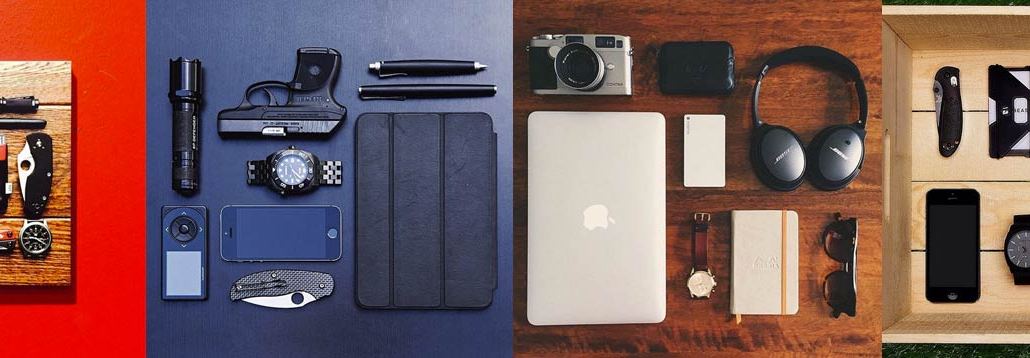Anatomy of a niche publisher: Everyday Carry covers the cult of pocket gear

Many digital publishers may chase general news coverage in the quest to scale an audience. But Everyday Carry is trying to prove that it can build a business covering even the most niche of interests.
The site, which started as a Tumblr blog in 2010, covers in exhaustive detail the culture around “everyday carry” — that is, the pens, knives and other small items that people carry around in their pockets and bags. No niche is too small, apparently. The site takes a platform approach, letting contributors share their EDC and look for inspiration from others. The 10-person site gets around 1 million unique visitors a month, according to internal numbers, and has almost 400,000 followers across Pinterest, Instagram and Vine.
The typical Everyday Carry reader ranges from the “super hardcore camo pants guy to the hipster in skinny jeans,” according to Everyday Carry operations manager Dan Saltman. Both sides, however, are obsessed with the idea of being prepared for unexpected situations and for finding the best new products. “The central idea is that you have all this stuff that you’re using all the time and you want the best versions of those things,” Saltman said.
Most of Everyday Carry’s output comes from its community of contributors. The site has four writers writing original content such as guides (“The Beginner’s Guide to EDC Flashlights”), interviews and gear roundups (“8 Card-sized Tools That Fit Your Wallet”). Saltman said that future content will include guides to the EDC of people in specific industries, such as “what wallets do attorneys buy?” and “reporters’ favorite pens.”
The site’s intense product focus has helped it develop two main revenue streams. Like The Wirecutter and Gawker, Everyday Carry has inked affiliate deals with Amazon, which gives the site a small cut (4 to 9 percent) of every sale it enables. Saltman said that the site drives 25,000 Amazon purchases a day and is poised to account for $5 million in Amazon sales this year.
The problem is that affiliate linking doesn’t exactly scale. “You’re not going to make a real living on affiliate fees,” said Razorfish strategy vp Jason Goldberg. “It’s not that you can’t make money there, but it’s not the most reliable revenue stream.”
Ad position: web_incontent_pos1
Everyday Carry also is growing its advertising, which now accounts for 70 percent of its revenue. Because readers often come to the site looking the best new flashlight or knife, Everyday Carry says it can offer brands readers with real purchase intent. The site has attracted smaller brands such as flashlight maker Fenix and, increasingly, larger ones such as Apple and Citi.
Everyday Carry wants to go beyond gear, though. Saltman said that the site plans to apply a similar model to men’s fashion with a site for people to share outfits with others, similar to the “What are you wearing today” subreddit. “Our theory is that people are tried to seeing professionally produced content when they just want to see what a normal person is wearing,” he said.
Image courtesy of Everyday Carry.
More in Media

NewFronts Briefing: Samsung, Condé Nast, Roku focus presentations on new ad formats and category-specific inventory
Day two of IAB’s NewFronts featured presentations from Samsung, Condé Nast and Roku, highlighting new partnerships, ad formats and inventory, as well as new AI capabilities.

The Athletic to raise ad prices as it paces to hit 3 million newsletter subscribers
The New York Times’ sports site The Athletic is about to hit 3 million total newsletter subscribers. It plans to raise ad prices as as a result of this nearly 20% year over year increase.

NewFronts Briefing: Google, Vizio and news publishers pitch marketers with new ad offerings and range of content categories
Day one of the 2024 IAB NewFronts featured presentations from Google and Vizio, as well as a spotlight on news publishers.
Ad position: web_bfu
